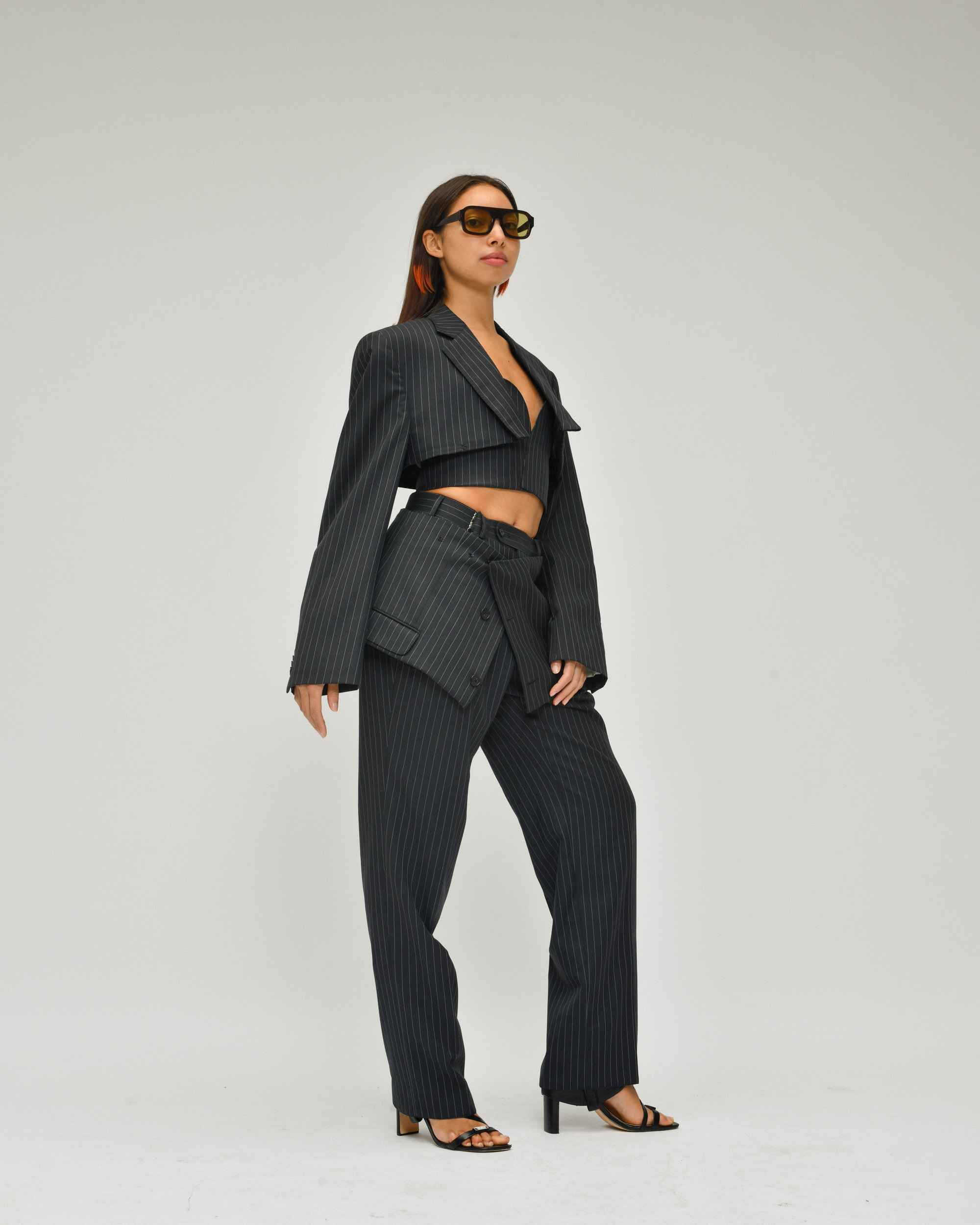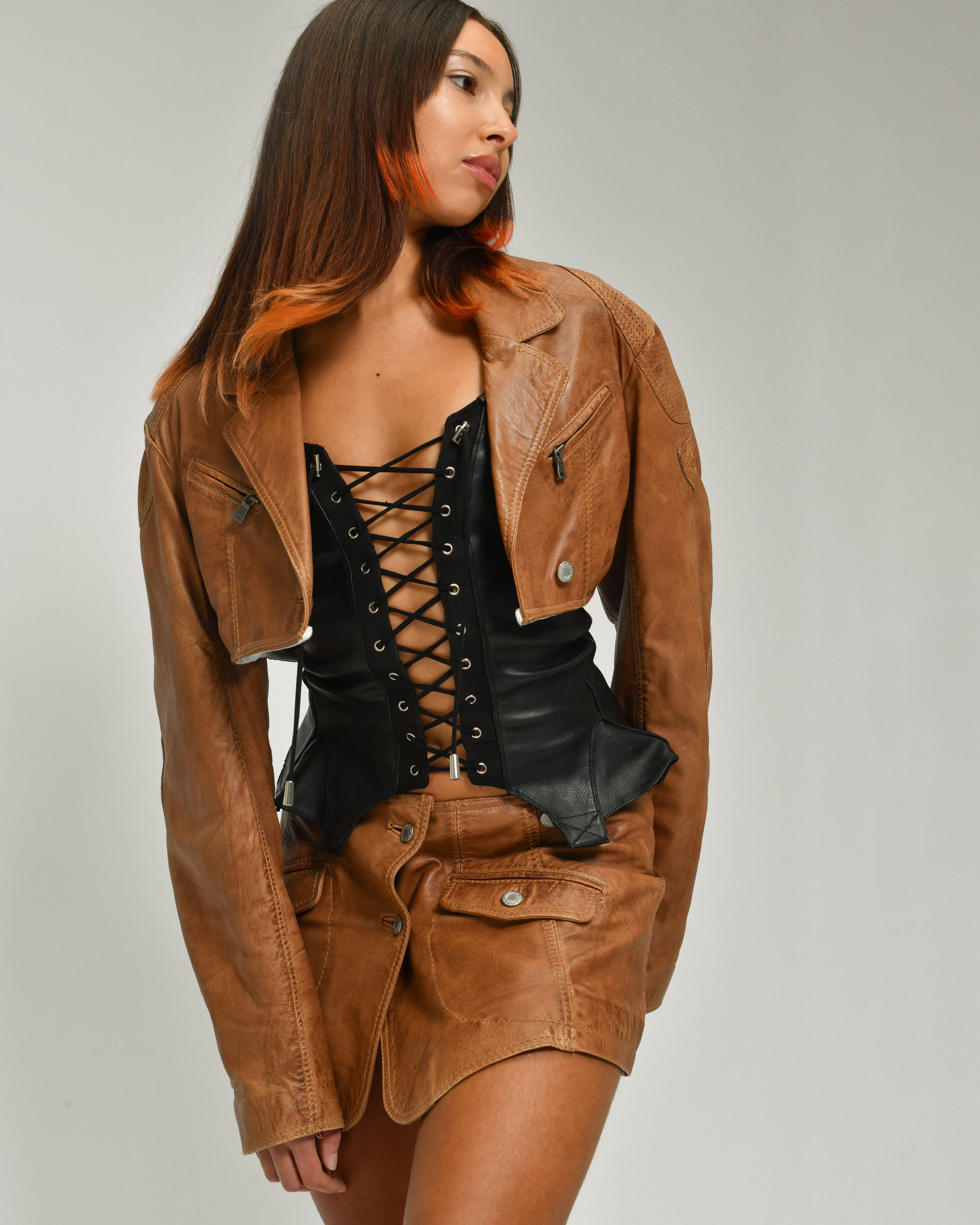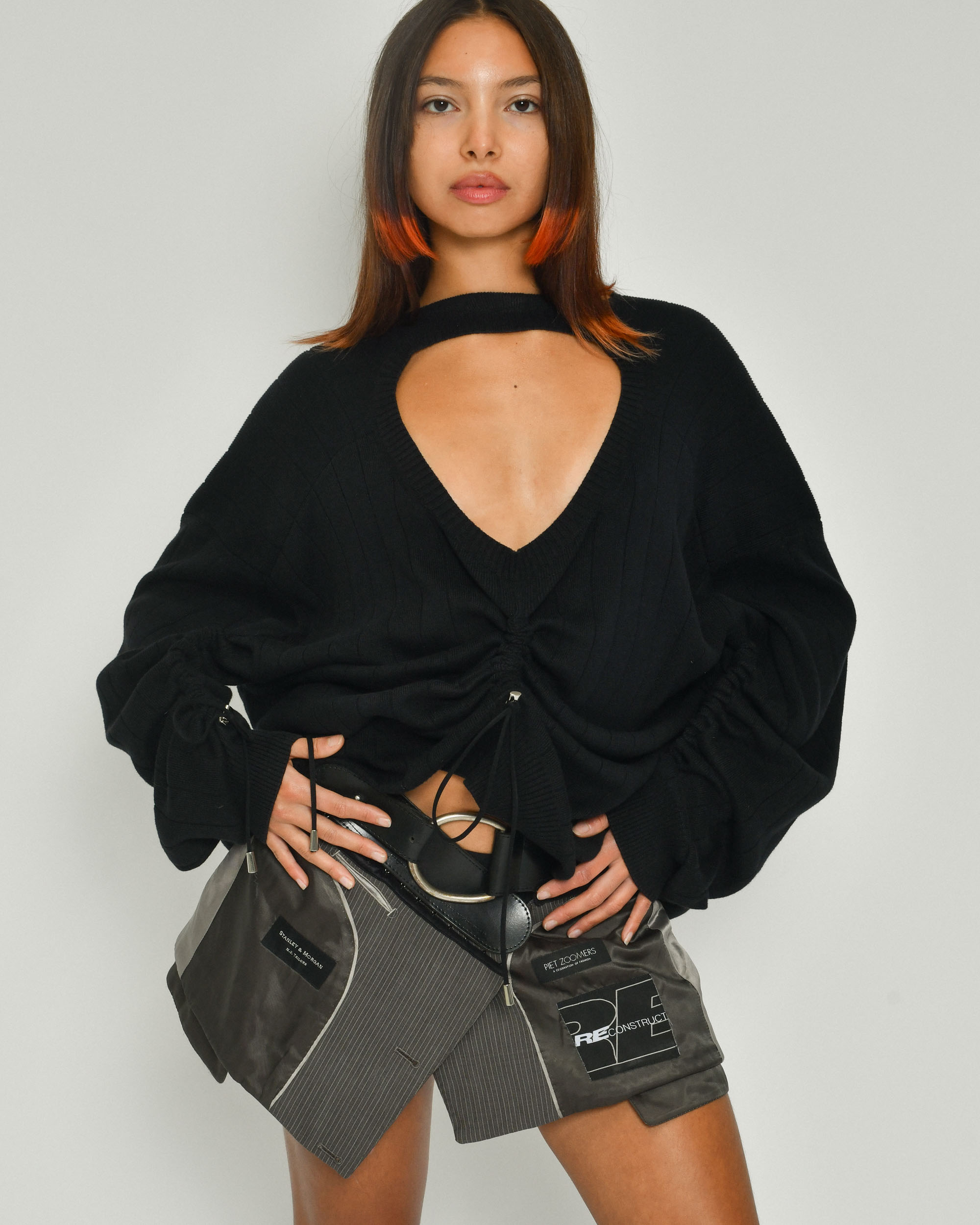IN TALKS with RECONSTRUCT
24.01.25RECONSTRUCT is a different kind of label. Growing from a student-formed collective into an established brand, RECONSTRUCT has grown its name through a genuine devotion to craft and its audience. Draping, cut-outs and a lot of leather form the basis of its collections, but their creative output stretches beyond the clothes created in their studio. RECONSTRUCT sees deconstruction and upcycling not only as a creative business model in a saturated market mired by overconsumption, but as a necessary tool in modern life. Through workshops and community outreach, RECONSTRUCT do what most labels don’t think to attempt: they offer their customers an insight to their own production process.
It’s an interconnectedness that speaks to the brand’s origins. The Amsterdam-label was effectively formed through friendship at university. Now, nurturing relationships remains at the forefront of their values. It’s not only a unique way of working. It could be a powerful way forward for many more like-minded designers. Laura Aanen, RECONSTRUCT’s Founder, talks us through the creative process and origins of this forward-thinking, innovative independent label.
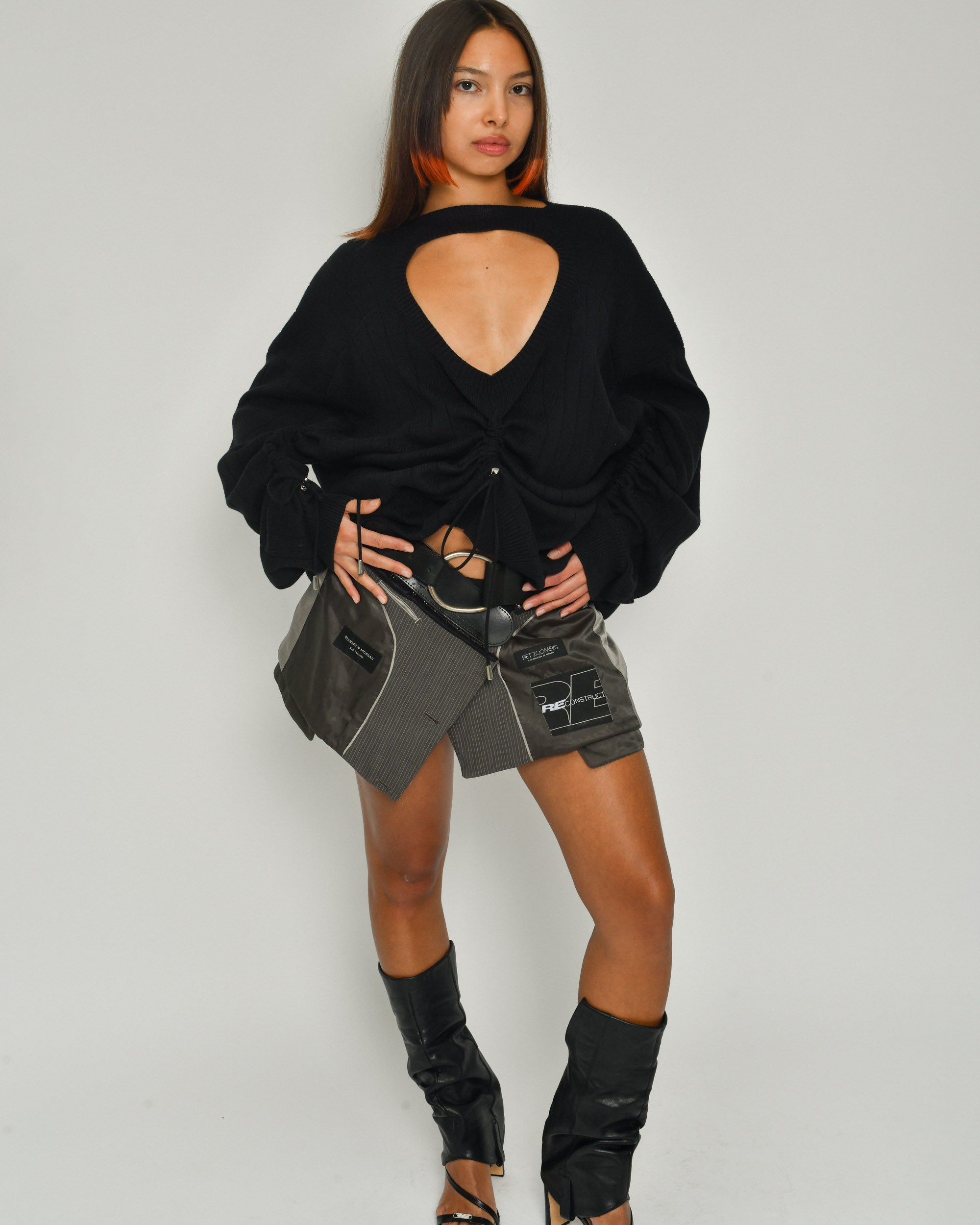
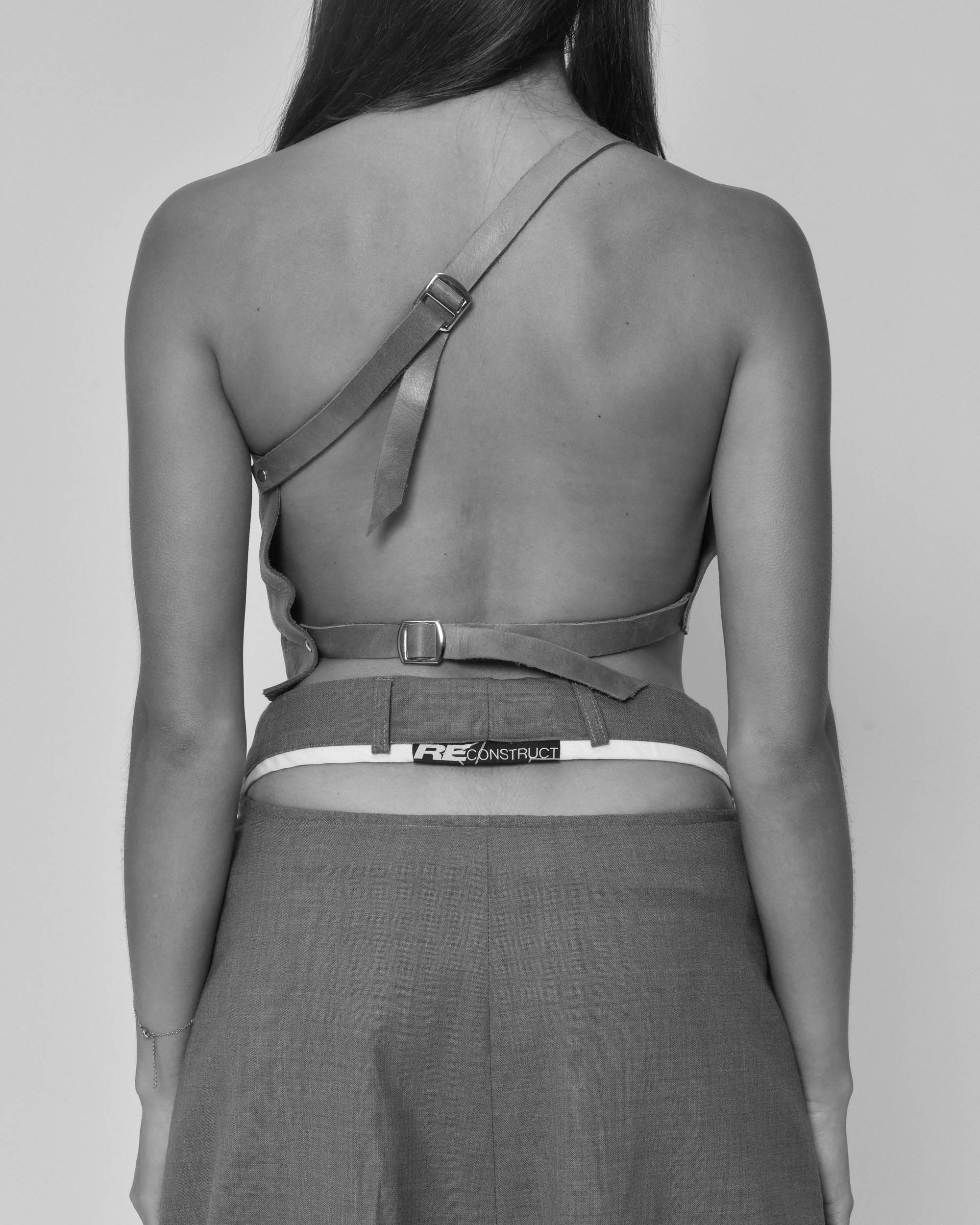
How did RECONSTRUCT get started?
RECONSTURCT Collective was founded by the Fashion Design graduating class of 2016 at the Art Academy in Rotterdam. As students, we organised the graduation show and raised money through crowdfunding to establish a company. This is how the Collective was born. It has taken many turns until the final form RECONSTRUCT is known for today.
You work with overstock and upcycled materials to create your pieces. Can you tell us about how you source these materials?
These materials are everywhere around us, there is just too much [leftover] material in the world nowadays. We’re approached by companies to rework their overstock, handed down garments from friends and family. We source thrift shops, markets and warehouses, scroll endlessly on Vinted or simply run into a genuine leather couch at the trash.
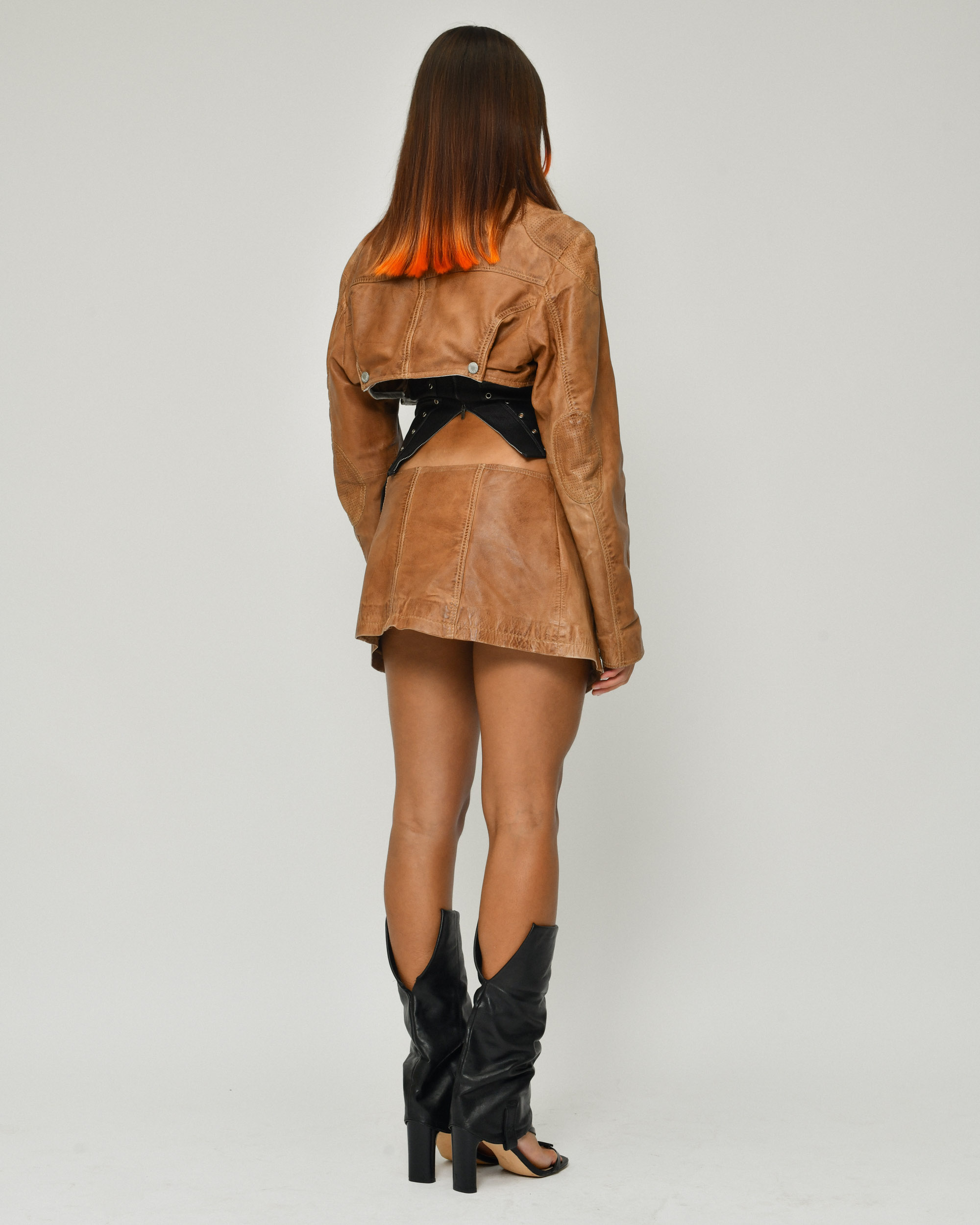
What comes first for you – do you source materials then decide what you can make from it, or do you start out with an idea for a design then go about sourcing materials that could work for that idea?
The material is the main inspiration.Its shape, its possibilities and its flaws. We aim to work with high quality materials, preferably natural fibres. These materials are most durable and have more possibilities to mend them. We will always source an item where we see potential in the material, but also its details or shapes, and then we start with draping and fitting until a new silhouette is created.
Do you find that this style of deconstruction pushes you to be more experimental?
Yes, it has taken me off the conventional path of pattern cutting and sewing which I was taught at the Academy. I still notice the different way of design when I work with interns from a fashion school and how they need to unlearn a lot of ‘rules’ before they feel free enough to ‘reconstruct’: to test, experiment, try on garments in different ways, cut off parts and turn things upside down and inside out. To me this way of working comes naturally, as there is always a little voice in my head saying, ‘this could look better this way’. I cannot design on a computer screen, I need something tactile in my hands.
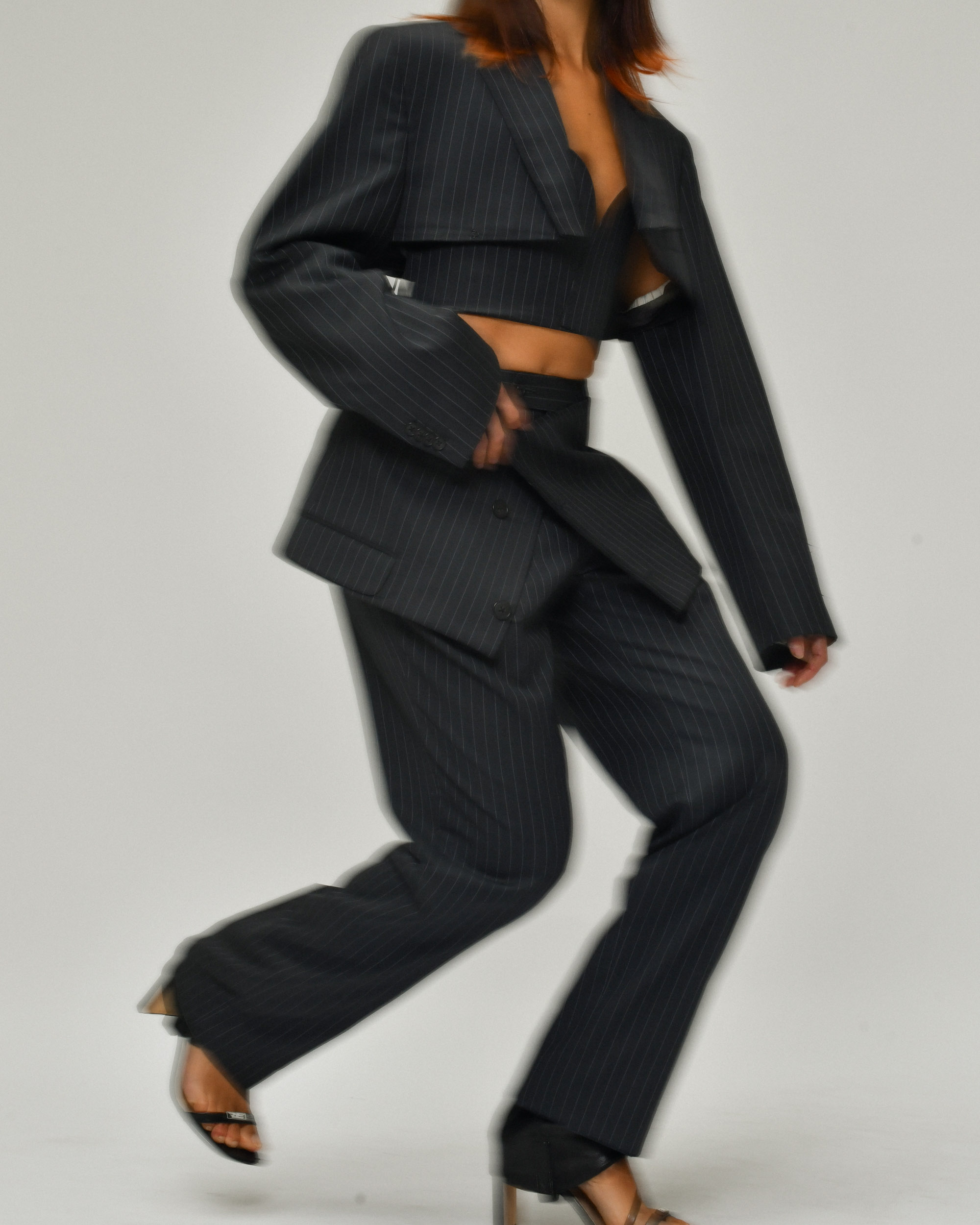
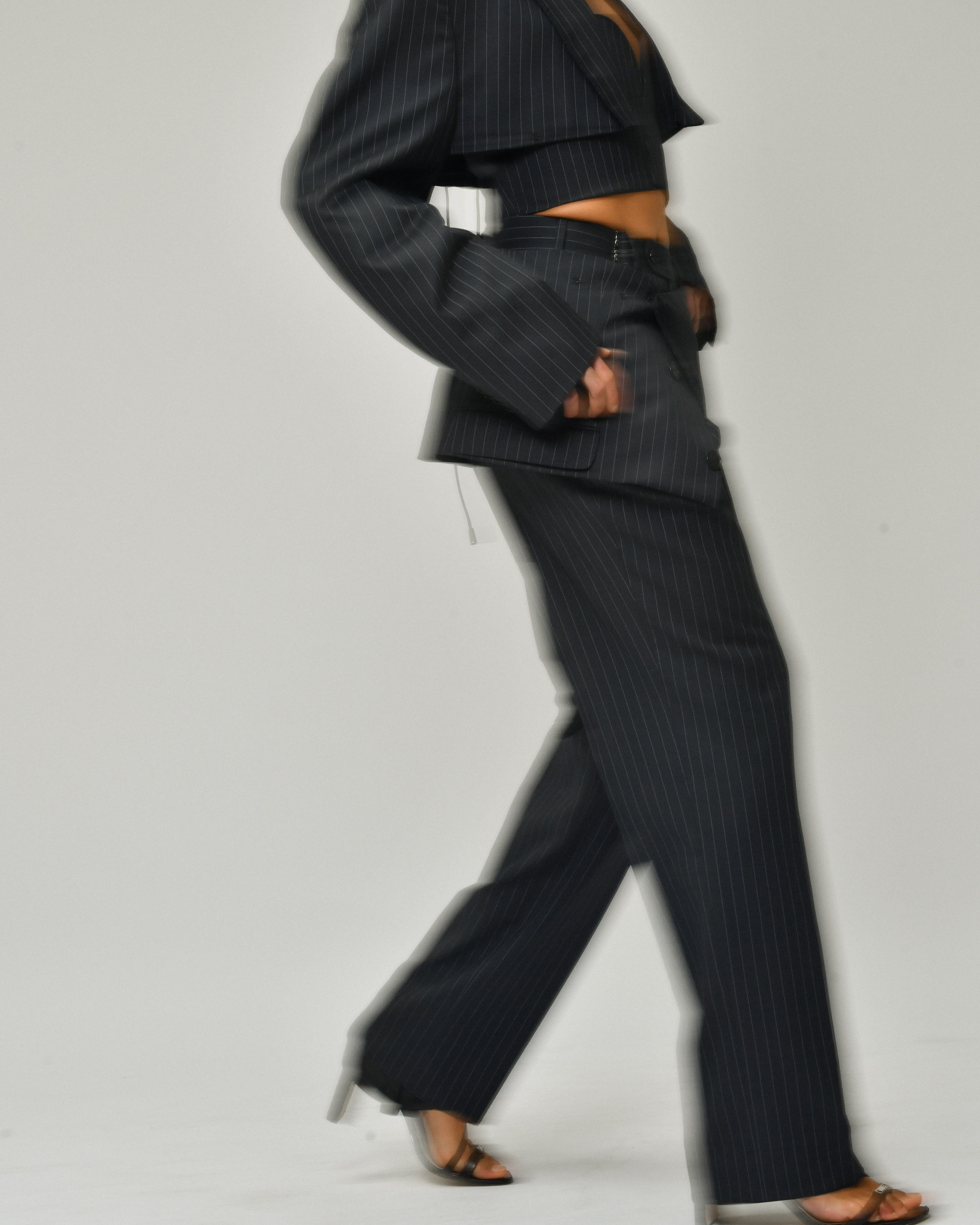
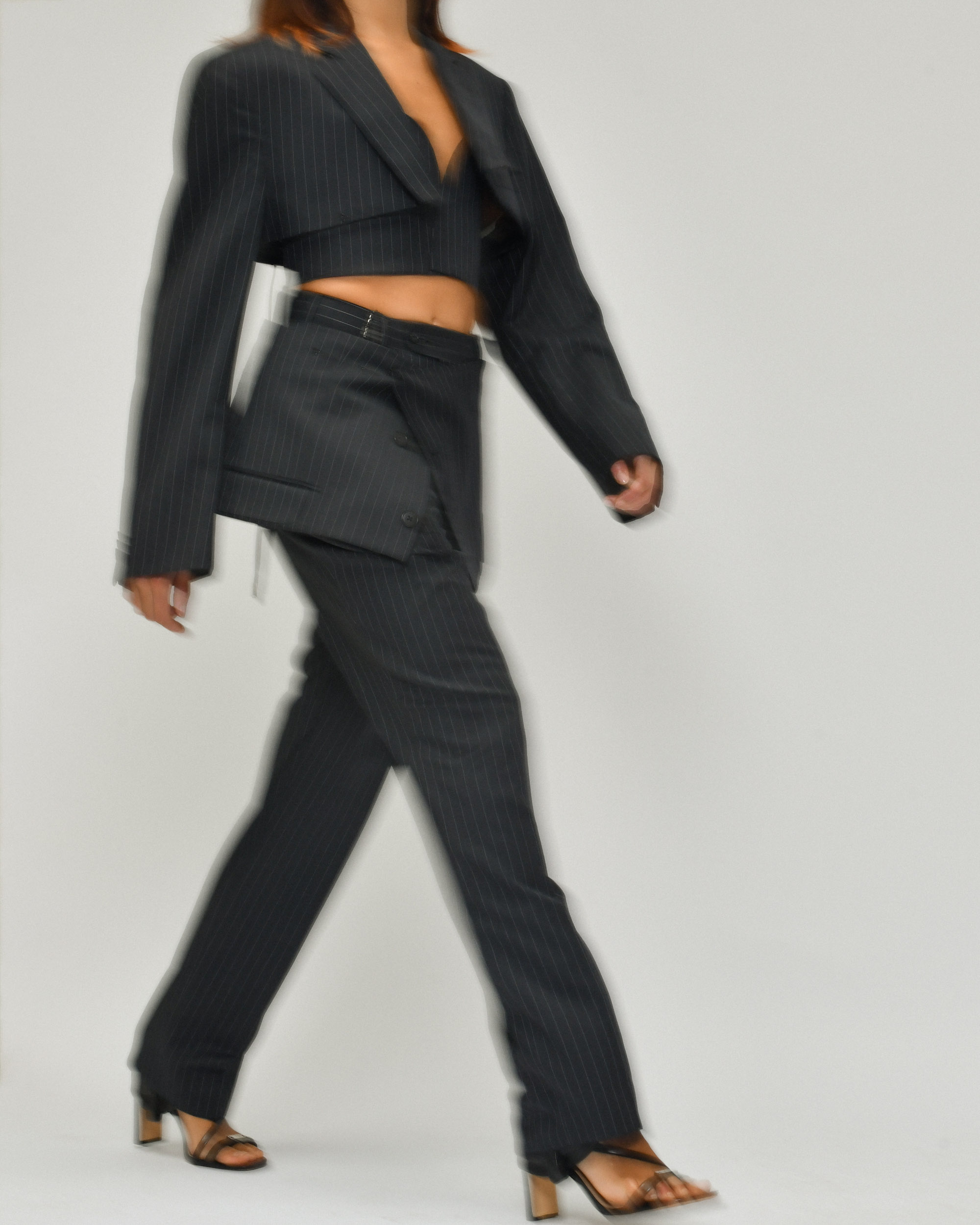
You’re based in the Netherlands. Is this where you’re from? What’s it been like to build a fashion brand within the creative community there?
I have moved around a lot but studied in Rotterdam. Straight after graduation, the Collective set base in Amsterdam and participated in Amsterdam Fashion Week several times. We got to work with other brands and build our community. It kicked off pretty quick in Amsterdam, without us really noticing. We were moving onto shows abroad and were so focused on New York Fashion Week that we lost track of our Dutch crowd. When we did shows in Amsterdam again the crowd was so big it astounded us. Although, the Netherlands is small. There is a creative community with a lot of potential here. Currently a lot is happening online, and in several parts of the world at the same time, which I am looking forward to seeing expand.
You also hold workshops as a brand. What type of projects do you work on in these spaces?
We hold ‘reconstruct’ workshops. In these workshops we invite people to bring a garment that they do not wear anymore but is of good quality and could serve as a base material for a new design. We will guide them along the way of draping, fitting, testing and mending this item into a new garment. These workshops are held around different themes, group settings and locations and are always slightly different, adjusting to the circumstances and desires of our clients. I believe in the importance of spreading awareness and knowledge around up-cycling and I enjoy getting to work with people in a creative way.
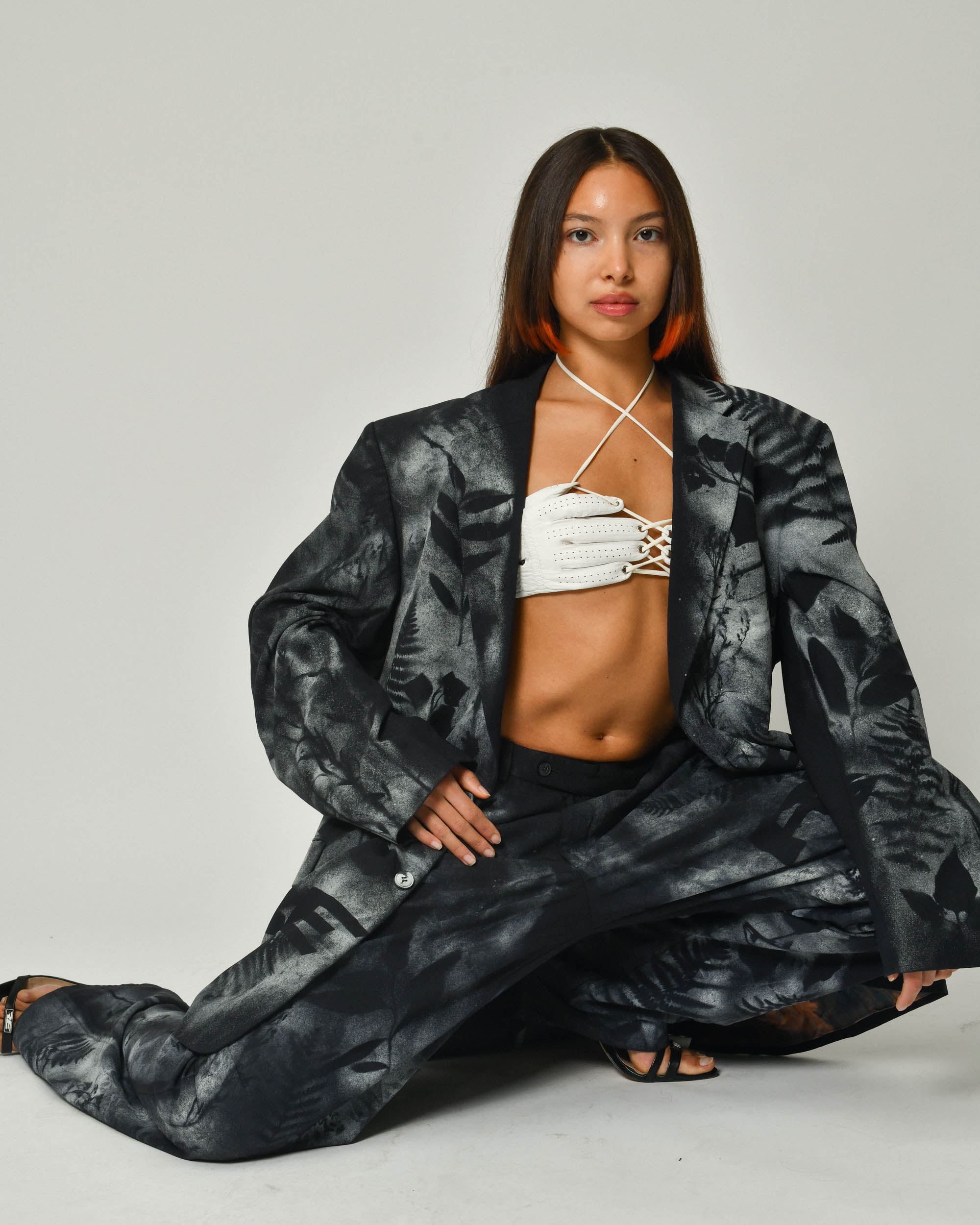
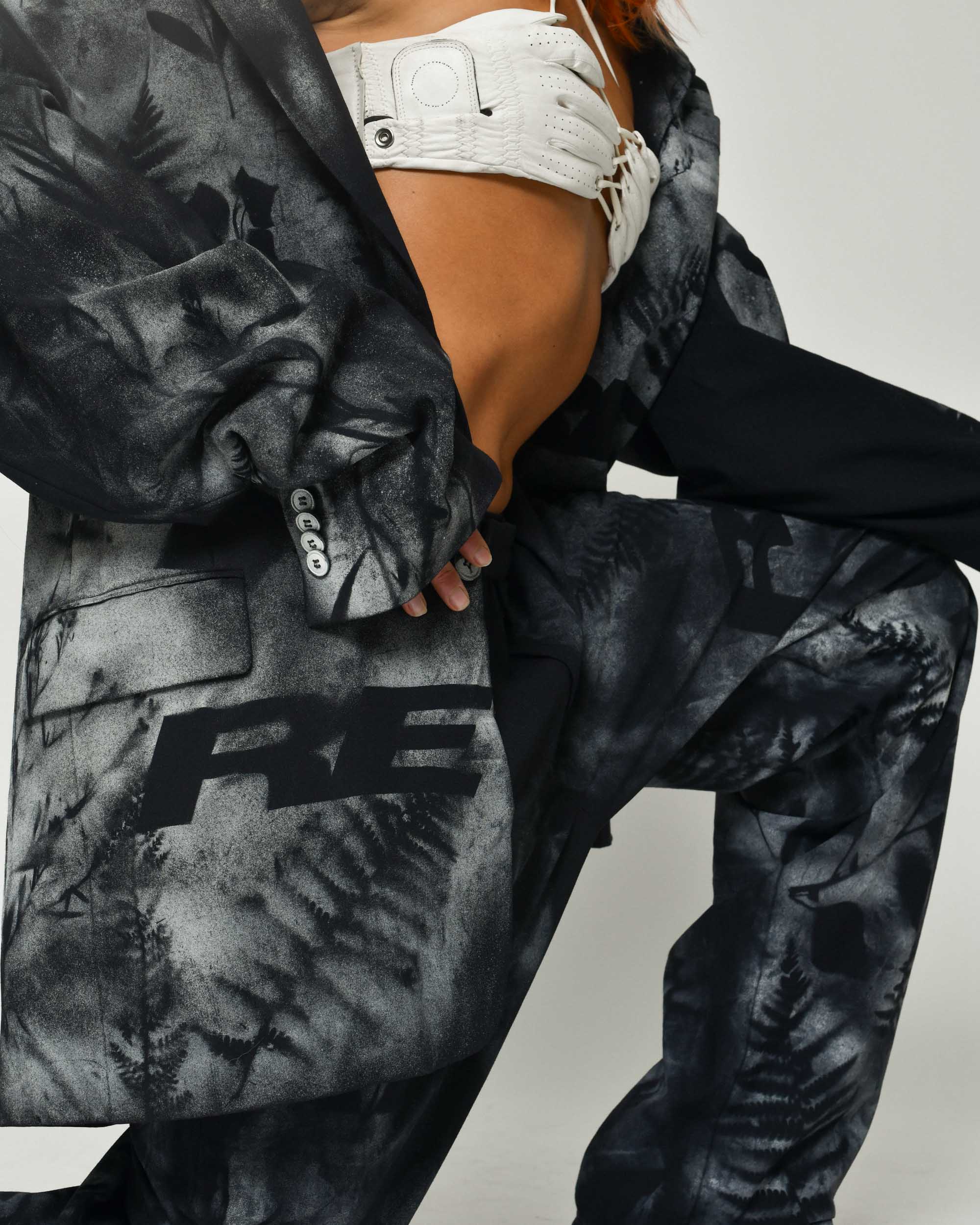
What would your advice be to other designers looking to start their own independent brand?
I would advise people to really think it through. Turning something that you love into a business will also make you hate it at times. It is hard work and you will be judged on something that is so close to your heart. Even though it also gives back, a lot of people will just run over it. Besides that, there are so many existing brands already, creating more and more that is flooding the world. If there are no other brands that you align with that you could see yourself working for, and if you strongly believe you have a new value to add by starting a brand, then do it.
I do not want to demotivate anyone who has this dream, I have just seen the masses of production and might have made another choice myself if I could do it all over again. I have worked for other fashion companies as well and have taken a lot from these experiences, so I would recommend doing this before starting a brand of your own.
